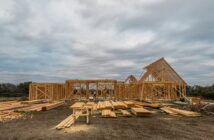While digitalisation in the construction sector helps with the challenges of an increasingly competitive market, a by-product of this is attracting tech-savvy talent, Rob Bryant from InEight says

Historically, the construction industry has been slow to keep up with the pace of an advancing digital world. However, as InEight research highlights, 100 per cent of APAC project owners and contractors have invested in project management software, connected worksite communications and operations and maintenance solutions – and an additional 78 per cent cite digital transformation as a key growth opportunity.
Investing in digitalisation improves project continuity, but it also allows the construction industry to address the skills shortage. Data reflects the worsening of the skills shortage will be the ‘challenge of the decade’ for the construction sector, so it’s imperative for the industry to invest in technology to alleviate the foreseeable trials and tribulations. A starting point to tackle this challenge is to analyse what particular types of skill that are in demand can be addressed by better use of technology.
Yet, turning the construction sector to implement more digitised processes allows for new and emerging roles in the construction sector to be met. Specifically, tech and soft skills opens the door to welcoming a new demographic into the sector, such as data analysts and BIM specialists.
The commitment to digital transformation isn’t just to embrace greater project certainty, but to attract tech-savvy players who were not traditionally recruited for the construction industry. This injection of new blood will reinvent and shape the future of construction workplace.
Implement technology to attract tech talent
Research from Master Builders Australia revealed the country will need for 300,000 new and skilled workers to enter the sector in the coming five years. As a start to meet this number, the enrolment in apprenticeships and traineeships in Australia increased by 84 per cent with the largest growth being the construction sector in 2021 compared to 2020.
Technology comes naturally to Millennials and Generation Zers. Whether it was university studies or personal endeavours, technology is how the newest generation entering into the workforce operates. In fact, research shows that Gen Zers have a desire for a flexible workplace with 46 per cent preferring a hybrid working model.
We can credit the pandemic’s influence on normalising remote work that led us into hybrid work. During this time, an emphasis on technology to connect a physically-distance workforce emerged. Now, it’s common to find technologies to connect information flows, even in the construction industry. But this doesn’t equate to enabling employees with collaborative tools limited to only laptops– construction companies should be turning to mobile-friendly technology that allows them to capture information real-time on the construction site.
The perception with the usage of phones and tablets is that mobile is already apparent in the construction industry. Adoption of administration technologies such as material tags and one touch data processing signifies the opportunity for the industry to replace human admin effort completely. But the sector needs to go one step further.
Data storage and process is, and should be the focal point of the industry’s digital transformation, so there needs to be an approach to ensure real value when the right person has the information in a timely manner and the ability to act on it – and cloud technologies is the backbone of this operation.
Cloud spending in Australia is set to reach US$14.1 billion in 2025. Implementation of cloud technology will not only change the way how data is being managed, but also shake up workplace structure to streamline manual labour and resource allocation. Such evolvement calls for the sector to match pace and embrace the technology needed to attract tech talent.
The benefits of talent diversity
Over the span of one generation, construction has been making a slow but steady transition from being entirely paper-based to incorporating 3D modelling, data analytics, and artificial intelligence-based technologies. Even though interest in pursuing the trades as a career choice has been on the decline, the industry can still take advantage of the counter trend that aligns with its own shift: the emphasis on S.T.E.M. skills in computer science, software engineering and data science.
These skills are actually blind to minority status, though minorities are currently underrepresented in tech fields as well. This represents a two-fold opportunity to attract a diverse new group of employees. This could appeal to the up-and-coming, tech-savvy generations who value diversity and want to expand their career opportunities.
Digital is the future of the construction workforce. It has and will continue to change the way the sector functions and how projects are managed. As a result, digital transformation has triggered new career opportunity that didn’t exist in the industry a decade ago.
In return, the rapid progression of project management technologies will only continue the sector’s evolution to attracting new talent; otherwise known as embracing talent diversity. Particularly as project teams are becoming more collaborative, thanks to construction technology, construction workforce diversity can help further strengthen innovative ideas, decision making and problem solving as more voices and perspectives are considered, which ultimately will have a positive impact on project outcomes.
Boosting technological capabilities is not just critical for improving project certainty and employee productivity, but to also meet today’s construction talent where they are. Implementing digitised processes into construction project infrastructure opens the door for native tech users.
Not only will native tech users fill needed roles, but this new pool of talent will be able to come in and easily embrace the technology which will help to evolve the industry farther and faster.








